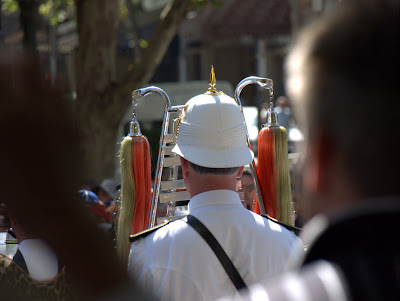For once, I photographed a parade without giving in to my 7-14mm. I’ve previously shot parades wide – with the Kodak P880 and the Zuiko Digital 7-14mm. But once I got the dslrbaby eyepiece magnifier, I thought I would give my manual focus 250mm f/5.6 Rokkor a good run.
I call this one, Spotted Ibex – the Helmet seems to merge with the orchestral instrument he’s carrying, to give an illusion of a deer’s antlers. If you see the bigger sized photo, you’ll see the threads of the instrument and the hairs on the back of his neck. I’m simply mesmerised.
Then, there was this. The sunlight was very harsh and bright – it’s Melbourne summer and what a summer. These RAAF guys had to stand at attention for a fair time as the speeches rolled through. Facing the sun. Without sunnies. No wonder the slitted eyes. The girl in the back has her mouth open, stifling a yawn.
There was also ethnic diversity in the ranks. The expressions are something worthwhile treasuring.
The military wasn’t an all men’s affair. This flag bearer has again eyes that would mesmerise me and a face that could launch ships. A great bonus was the angelic child looking on.













![Reblog this post [with Zemanta]](https://img.zemanta.com/reblog_e.png?x-id=c2bae639-54ee-4a50-994b-7fc82fb075b5)